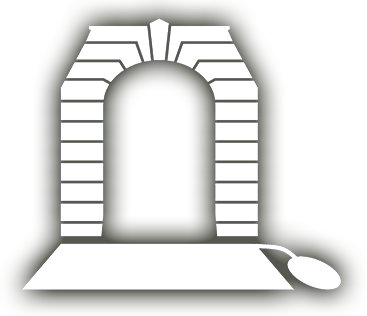LEACH, James Thomas Mathew
| Service Number: | 2241 |
|---|---|
| Enlisted: | Not yet discovered |
| Last Rank: | Private |
| Last Unit: | 37th Infantry Battalion |
| Born: | Not yet discovered |
| Home Town: | Not yet discovered |
| Schooling: | Not yet discovered |
| Occupation: | Not yet discovered |
| Memorials: |
World War 1 Service
| 25 Sep 1916: | Involvement Private, 2241, 37th Infantry Battalion, --- :embarkation_roll: roll_number: '17' embarkation_place: Melbourne embarkation_ship: HMAT Shropshire embarkation_ship_number: A9 public_note: '' | |
|---|---|---|
| 25 Sep 1916: | Embarked Private, 2241, 37th Infantry Battalion, HMAT Shropshire, Melbourne |
Served in France with 37 Battalion AIF.
James Thomas Mathew Leach, born in Bendigo, Victoria on 30 March 1882, was the son of Frederick Russell Leach (1844-1920) and Catherine Dobie (1849-1918).
Leach enlisted in Melbourne on 8 June 1916, aged 34, leaving his job as a labourer. He was part of the 3rd Reinforcements, 37th Battalion. The 3rd Reinforcements embarked from Melbourne, on 25 September 1916 aboard HMAT A9 Shropshire. The Reinforcements arrived in Plymouth on 11 November 1916.
He proceeded to France from Folkestone on 20 December 1916. He was Taken on Strength of the 37th Battalion on 15 January 1917. 37th Battalion AIF, was part of 10th Brigade, 3rd Australian Division. At this time, the 37th were in the line at Armentieres. January 1917 was a challenging time for the men of the 37th. The weather had been very cold with intense frosts. The water in the shell-holes had frozen over, and the Lys River and the numerous canals around the area were also coated with ice, which grew thicker day by day. Men had need of all the warm clothing they could find, wearing sheepskin or leather waistcoats. In the confined space of the trenches, they found it difficult to keep their feet warm, and almost impossible to keep them dry. As a means of preventing frostbite, or “trench feet”, strict orders were issued for all troops to change their socks daily and rub their feet well with whale oil. To suffer from frost-bitten feet was considered a dereliction of duty almost as serious as a self- inflicted wound; and platoon commanders were ordered to see that their men cared for their feet. To assist in keeping his feet dry, on entering the trenches Private Leach would have received a pair of rubber thigh-boots. These gumboots enabled Leach to splash through the muddy trenches without his feet becoming wet.
Snow fell heavily on 18 January, his third day in the trenches. Practically the whole Battalion was used that day to dig a communication trench on the left of the 10th Brigade sector. The area stayed covered in snow for weeks after.
The unit moved into billets at Steenwerck on 19 January 1917 receiving notice to return to the line one week later on 26 January 1917 and move into the reserve trenches at Rue du Bous, south-east of Armentieres.
However, James Leach wasn’t with the unit. Proceedings of a Court Martial held at Armentieres on 17 February 1917 charged him with absenting himself without leave from the billets at Blanche Maison, Bailleul. Whilst the main part of the 37th had been in hutments at Jesus Farm, A Composite Company had been sent to Blanche Maison, a farm some four miles nearer to Bailleul. The men of this company had been detailed to erect stables for the horses of the 3rd Divisional Train. On the morning of 26 January as the men prepared to move up to the trenches James was found by his Platoon Sergeant (No. 3 Platoon ‘A’ Company) to be absent.
His service records contain several witness statements as well as his defence.
Private Leach had been spotted at 4.30pm that day (two hours after the Company had moved up to the trenches) walking with several others of the Battalion along the Bailleul-Steenwerck Road towards Steenwerck. In his defence he stated that on the previous evening he had consumed some wine and the next morning Friday 26 January he went to breakfast and got more wine.
‘I quite lost my senses until I woke up in a paddock.’
Although he stated that he had tried to find his Company before turning himself in to the Provost, he was sentenced to 42 days Field Punishment No. 1.
He was admitted to hospital on 19 February 1917 staying there until he returned to Australia aboard A33 Ayrshire on 23 May 1917 having been found to have had flat feet. He was discharged in Melbourne on 6 September 1917.
He re-enlisted on 2 October 1917, for service only in Australia serving at No. 11 Australian General Hospital in Caulfield, Victoria. He was discharged by his own request on 29 January 1919 however reenlisted for a third time on 25 March 1919 rejoining the Australian Army Medical Corps serving at the AAMC Military Sanitorium in Macleod until 19 July 1919 when he was discharged as his service was no longer required.
He died on 10 June 1941 and is buried in Springvale Cemetery in Melbourne.
Submitted 9 March 2024 by Tim Barnett









